News
What should you do if you get lost while climbing or trekking?

Hiking, mountain climbing – interesting journeys, full of experiences with unpredictable situations. It is difficult to stay calm when lost in the group, and it is impossible to force a person who has just started mountain climbing and camping to learn all about survival knowledge, or how to escape from the forest if lost. Read this far, don’t be afraid to retreat, the probability of getting lost is very low, as long as you are careful to stick with the group and have good teammates. Next, please refer to the following article to equip yourself with basic solutions if you accidentally get lost!
- Try to stay calm – don’t panic
- Find your own way out or wait for rescue?
- Don’t wander
- Shelter and food
- Fire
- Determined not to get lost
1. Try to stay calm – don’t panic
In case you find yourself lost while walking, and lost in the forest at that, who can stay calm? The author knows, that’s why he used the phrase “Try to stay calm”, you have to be extremely calm because you have to be calm, your mind is stable, then your decisions and judgments will be accurate. The best way to regain your composure is to stop, put your luggage down, close your eyes and breathe deeply and evenly until you are truly calm.
A familiar principle but not everyone understands and can implement is the STOP principle.
| 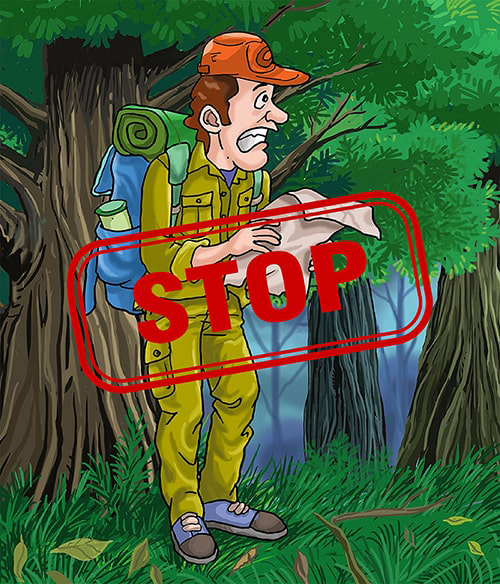 |
And remember: The starting point and the deciding point of whether you can safely escape from the forest is your calmness. You must keep calm at all costs.
2. Find your own way out or wait for rescue?
This is the first and most concerned question when getting lost in the forest. So when you find yourself lost, should you sit in one place and wait for rescue, or try to find your own way out? Which is safer and better?
The answer is that one is not better than the other, one is not preferred over the other. Make your choice based on what you have, based on your abilities.
Choose to go on, find your own way out when:
- You are very knowledgeable about the terrain of this area.
- You have a Tracklog, or a compass and a map, of course you know how to use it.
- You are in good health and have not suffered any injuries.
- You have good survival knowledge and are able to put that knowledge into practice.
- You have full survival gear to deal with other unfortunate situations.
There are many requirements for you to be able to confidently find your way out, the person who can meet all these factors can only be a leader, a guide, or an experienced “veteran”. As for those who are new to this sport and accidentally get lost, think about “waiting for rescue”.
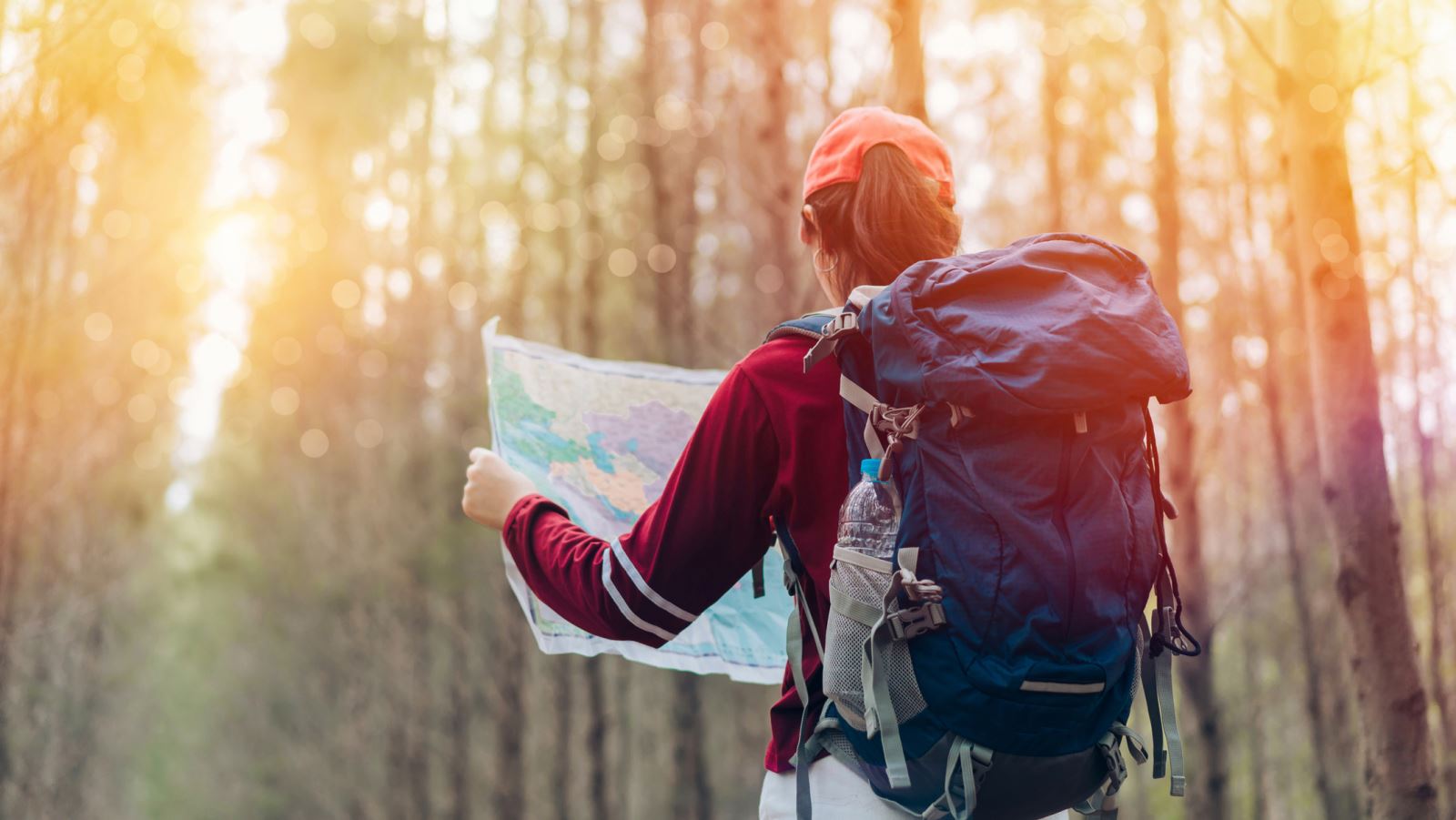
When to wait for rescue?
When you cannot go on, do not have all the necessary conditions to continue, you should wait for rescue. Waiting for rescue does not mean sitting still in one place. You need to find a safe shelter and make sure you have enough food and water until rescue arrives. At the same time, you need to find an open space, high enough to create a distress signal.
3. Don’t wander
The worst thing to do when you get lost is to wander. Don’t think you are trying to find a way out of the forest. This will only cause you to lose your direction and wander aimlessly. Because when you walk like that, you will fall into the maze of the mountains and forests, the more you walk, the more panic you will feel, the more you will not be able to find a way out, which will lead to exhaustion and many other undesirable situations.
4. Shelter and food
Whether you continue to find a way out, or stop to wait for rescue, ensuring shelter, food and water is a must.
Finding shelter is a must because at night when the temperature drops, you will easily catch a cold from the dew, low temperature,… shelters can be tents, tree roots, rock crevices, or you can create your own shelter….
Food and clean water: The human limit is 3 days without thirst and 3 weeks without hunger. However, when faced with real-life survival, it is impossible to wait until the limit. That is why food and water need to be prepared in advance.

There will be 2 cases:
Luck – the result of careful preparation
- You have all the necessary survival gear, you have a tent, enough warm clothes and food and water for the next 1-2 days.
- What you need to do is find a safe, high, open place to stop and send a distress signal to the outside.
- But this is the ideal condition, most will fall into case 2.
Not lucky
Your luggage must have food, water and clothes to keep warm. At least enough for you to find additional water sources. To do this, you need to have a solid knowledge of plants to find food (before leaving, ask the people in that area, or the guide about the types of fruits and leaves that can be eaten, or you can ask on the way). Next is understanding water in survival , how to find and filter water in survival. At the same time, you need to have the necessary survival tools and survival knowledge .
But to survive in harsh conditions is unfortunately extremely difficult, so be well prepared to return to case 1!
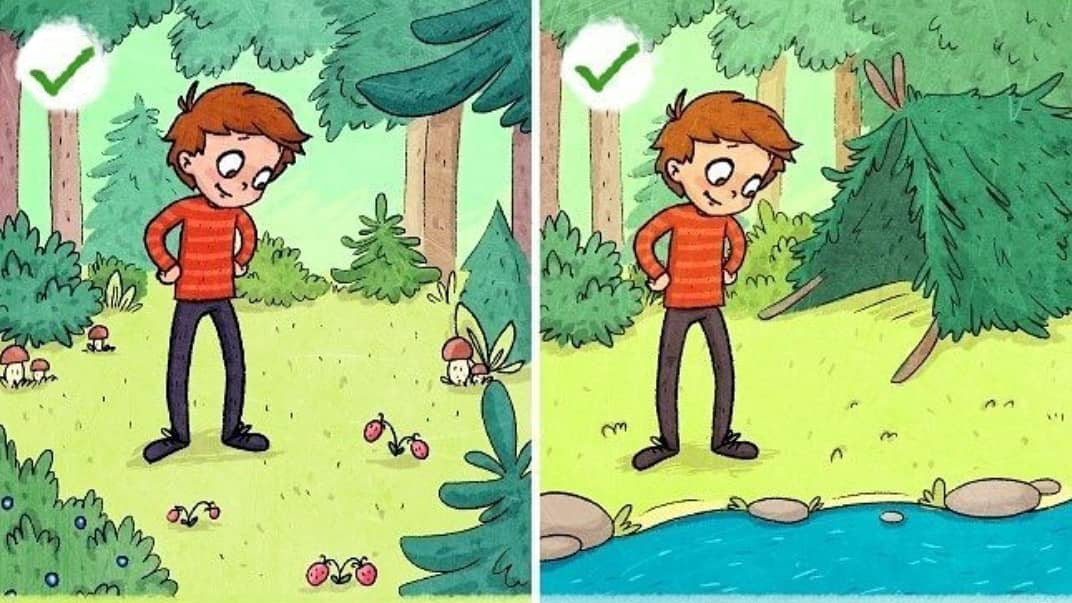
After settling in with shelter and food, create a distress signal so that people outside can find you more easily. Specifically, please refer to the article: Ways to create distress signals when lost.
5. Make a fire
In survival, in the forest at night, you must be able to light a fire – otherwise you are done for.
So how to light a fire?
Basically, you need tinder, firewood and a fire source. In the forest, you certainly don’t have to worry about not having firewood, the problem is that you must have a fire source. You can’t make a fire by rubbing a tree together, or hitting two rocks together like in the movies. You need a lighter, matches or a lighter. And what I recommend is a lighter, because it will not be affected by water and outside conditions. Don’t forget to learn how to use a lighter before the journey, because if you get lost, staying calm enough to sit down is good enough, let alone sitting down and then learning how to light a fire.
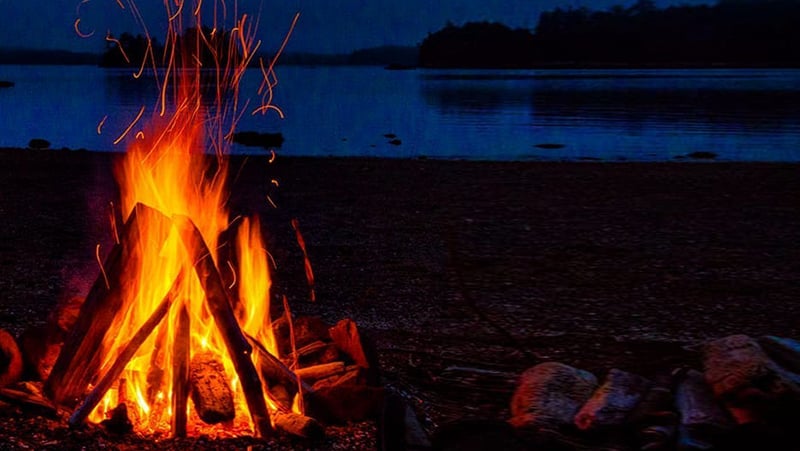
In addition to calming your spirit, a fire also helps to repel insects and wild animals at night. In addition, it attracts human attention, increasing the possibility of rescue teams finding you.
See also how to make a campfire.
In addition to fire (fire starter), you need to prepare necessary survival items in case you get lost.
6. Determined not to get lost
Getting lost from your teammates when climbing or trekking is extremely unlikely, it must be said that the probability of it happening is very low and almost zero when you are attentive and careful.
Note the following to make sure you don’t get lost when climbing:
- Stick with the group – never go alone, this is the most important and effective rule to avoid getting lost. A group can be divided into 2-3 groups, but the distance between the groups must ensure that they can see each other, a group must have 3-4 people. ABSOLUTELY DO NOT GO ALONE .
- At the campsite, when going to get firewood or go to the toilet, you should go with 2 or more people.
- Follow the trails, tracklogs. Don’t explore new roads, because in addition to the risk of getting lost, there are also wild animals, insects, and reptiles that are extremely scary. They have left trails for us to follow, so stick to the trails and move!
- The role of the Leader is very important in ensuring the number of members in the group. It is necessary to assign a capable person to lead the way and close the specific group.
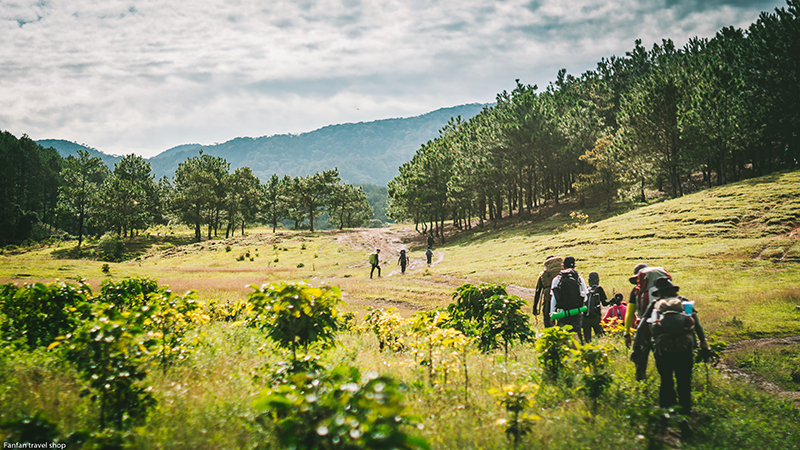
Basically, if you follow the above rules, you don’t need to worry about getting lost. If you follow all the above rules and still get lost, then you’re getting lost in a group, which is still less scary than getting lost alone.

